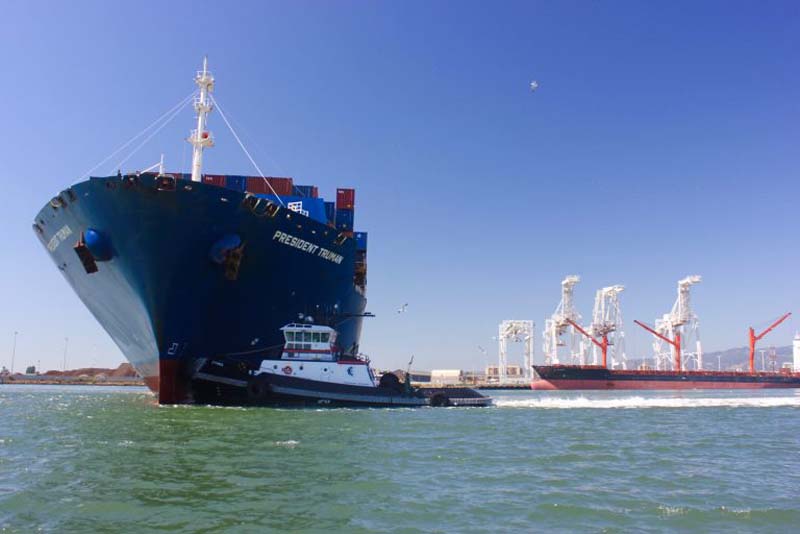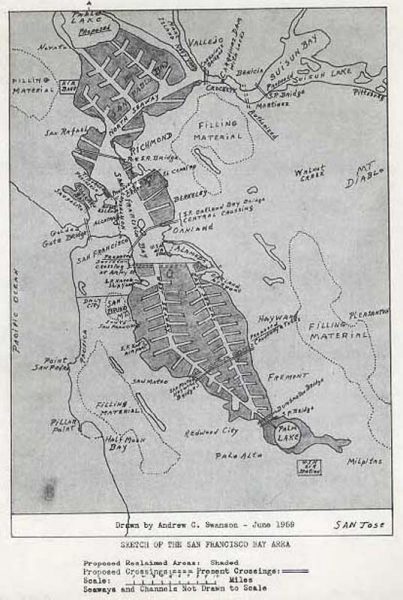
Launching Our New Working Waterfront Page for Labor Day
What’s the greatest feature of the Bay Area? Obviously, the Bay. The weather is awesome, the topography is stunning, the people inspiring and the views magnificent, but it goes without saying the Bay Area would suffer tremendously without the Bay at its core. Beyond its scenic beauty, the Bay has been a source of food, commerce, transportation and, of course, a world-renowned sailing mecca. How amazing is it to have a temperate, 12-month sailing venue in the heart of a vibrant global economic hub? It’s the shoreline that provides the access for everyone.

For Labor Day weekend we’re launching a new page on our website, Working Waterfront, as a tribute to the workers and businesses along the precious Bay Area and West Coast waterfront.
What keeps the Bay’s recreational and commercial activities humming is an eclectic collection of tradespeople, commercial maritime businesses, boatyards, boat builders, sailmakers, marinas, artisans, craftspeople, and others who serve as essential workers in the maintenance of a resilient, sustainable waterfront infrastructure. This creates an economic foundation for the region, as well as a fundamental resource for the entire region’s quality of life. Access to the Bay on a kayak, SUP, sailboat or yacht is a critical escape from the urban jungle.

It is where the shore meets the sea that most maritime businesses need to be located. In California and, indeed, throughout the US, marine businesses have been getting displaced as real estate developers and urban sprawl encroach on land previously devoted to maintaining our maritime trades. The pressure on the waterfront has inspired a bill co-signed by Marin congressman Jared Huffman, H.R.3160, the Keep America’s Waterfronts Working Act, which aims to help preserve the jobs, skills and trades necessary to keep all forms of boating viable and accessible. Cal Maritime in Vallejo, Orange Coast College School of Sailing & Seamanship in Newport Beach, Spaulding Marine Center in Sausalito, Training Resources Matitime Institute in San Diego, and Port Townsend’s Northwest Maritime Center are a few of the West Coast organizations dedicated to growing and maintaining the skills and trades necessary to support the maritime trades.

In addition to federal legislation, there is now a National Working Waterfront Network helping organize and support regional working-waterfront organizations such as the Sausalito Working Waterfront Coalition. The latter is working hard to preserve the industry and marine services available in Sausalito’s Marinship district. This is the same challenge faced from Maine to Florida, and along the Gulf Coast and the West Coast.

This goes far beyond people simply being able to maintain and sail their boats. The pandemic highlighted once again how many of our vital skills, technologies and manufacturing capabilities have migrated offshore. We discovered we can’t make cloth masks or the most sophisticated semiconductors. All these skills are needed right here and will only exist here if we support the infrastructure necessary to train the next generation and support the businesses that provide the jobs and services needed. Yacht clubs, sailing clubs, marinas, launch ramps, and community sailing centers are the facilities that provide access to the Bay for everyone who can’t live on the shoreline. Residential development along the waterfront reduces land available for maritime use and increases prices along the waterfront as usage shifts from public maritime services to private non-marine ownership.

Many who drive around Alameda won’t remember when Mariner Square, now the site of a senior living facility, was the site of one of the Bay Area’s biggest boat shows and home to North Sails and many boat dealers and services. There are numerous former boat-building and repair sites now long lost to condominiums and other developments. Housing is needed, and much of the waterfront needs reconstruction and updating, but region-wide planning would make sure we don’t lose the services that support all of our local maritime activities.

The ability to access and enjoy the Bay is being challenged. We’ve watched with alarm as the space available on the waterfront for critical maritime services has shrunk, as land developers press in on scarce waterfront space. It makes sense that marine businesses have to be at the water’s edge. It makes less sense that this land be used for residential real estate, ballparks or office parks. Latitude 38 has covered the evolution of the waterfront since its inception.

Latitude 38 prefers to focus on the racing, cruising and general sailing of West Coast sailors. However, through the years, issues of development, taxes and other impacts come along to further limit the public’s access to and enjoyment of the Bay. Throughout the 20th century much of the Bay was filled to make room for the booming local economy and population. Fortunately, as in the case of Golden Gate Park in San Francisco, or Central Park in New York, visionary people in the past recognized the value of preserving access to nature in our urban lives. The waterfront provides that critical access for both recreation and commerce.
Our life is sailing, but as we approach Labor Day 2022, we’re also launching a page to highlight stories of the Working Waterfront and pay tribute to the people, businesses and organizations that make sure the Bay works for everyone.

It is very timely that Latitude has responded to the urgent need here, before our working waterfront and the skill sets that keep it working, disappear entirely. Too many people these days don’t even have a clue how to change a tire, and the boatyard gives one a tremendous set of mechanical skills. We need more of this, not less
Here’s hoping Lat-38 is the catalyst to helping divergent opinions being realistically discussed! THANKS